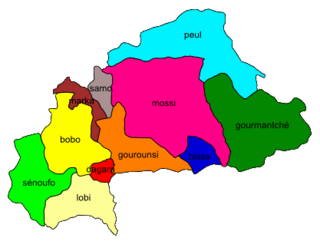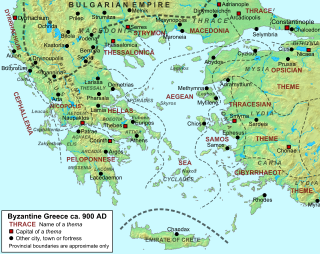Related Research Articles

Samos Prefecture was a prefecture in Greece, consisting of the islands of Samos, Ikaria and the smaller islands of Fournoi Korseon. In 2011 the prefecture was abolished and the territory is now covered by the regional units of Samos and Ikaria. Its capital was the town of Vathy, on Samos.

Aristarchus of Samos was an ancient Greek astronomer and mathematician who presented the first known heliocentric model that placed the Sun at the center of the universe, with the Earth revolving around the Sun once a year and rotating about its axis once a day.

Samo founded the first recorded political union of Slavic tribes, known as Samo's Empire, ruling from 623 until his death in 658. According to Fredegarius, the only contemporary source, Samo was a Frankish merchant who unified several Slavic tribes against robber raids and violence by nearby settled Avars, showing such bravery and command skills in battle that he was elected "King of the Slavs". In 631, Samo successfully defended his realm against the Frankish Kingdom in the three-day Battle of Wogastisburg.

The North Aegean Region is one of the thirteen administrative regions of Greece, and the smallest of the thirteen by population. It comprises the islands of the north-eastern Aegean Sea, called the North Aegean islands, except for Thasos and Samothrace, which belong to the Greek region of Eastern Macedonia and Thrace, and Imbros and Tenedos, which belong to Turkey.

The SAMOS or SAMOS-E program was a relatively short-lived series of reconnaissance satellites for the United States in the early 1960s, also used as a cover for the initial development of the KH-7 GAMBIT system. Reconnaissance was performed with film cameras and television surveillance from polar low Earth orbits with film canister returns and transmittals over the United States. SAMOS was first launched in 1960 from Vandenberg Air Force Base.

Samos is a Greek island in the eastern Aegean Sea, south of Chios, north of Patmos and the Dodecanese archipelago, and off the coast of western Turkey, from which it is separated by the 1.6-kilometre-wide (1.0 mi) Mycale Strait. It is also a separate regional unit of the North Aegean region.
Samo is a small town and comune located in the Province of Reggio Calabria, southern Italy. Samo has a population of 1,090, but this increases seasonally. Samo is about 10 kilometres (6 mi) inland and about 390 metres (1,280 ft) above sea level. It is located at the foot of Aspromonte National Park.

Samiopoula is a Greek islet located on the south of Samos Island and at a distance of 0.85 km (0.46 nmi). It is under the authority of the regional unit of Samos and the local jurisdiction of the municipal unit of Pythagoreio. The 2001 census reported a population of five inhabitants. The name Samiopoula is a derivative of Samos and literally means "small Samos".

Samos International Airport "Aristarchos of Samos" is an airport on Samos Island, Greece.
In ancient Greek religion, Kanathos in the Argolid was the spring at Nauplia, where Hera annually renewed her virginity. There, Pausanias noted, was "a spring called Kanathos where, so say the Argives, Hera bathes every year and, by so doing, becomes a maiden; it is this story which is of the secrets connected with the rites which they perform to Hera." The unspoken nature of the ritual forbade its being embodied openly or directly in Greek mythology. S. Casson suggested that it was the obscure subject of the so-called "Ludovisi Throne", generally considered to represent the parallel, and far better-known, renewal of Aphrodite, bathing in the sea at Paphos.

Camila is a Mexican pop rock group formed in 2005 by Mario Domm, Pablo Hurtado and Samuel "Samo" Parra.
SAMO is a graffiti tag originally used on the streets of New York City from 1978 to 1980. The tag, written with a copyright symbol as "SAMO©", and pronounced Same-Oh, is primarily associated with the artist Jean-Michel Basquiat, but was originally developed as a collaboration between Basquiat and Al Diaz.

The Principality of Samos was an autonomous tributary state of the Ottoman Empire from 1834 to 1912. The island of Samos participated in the Greek War of Independence and had successfully resisted several Turkish and Egyptian attempts to occupy it, but it was not included with the boundaries of the newly independent Kingdom of Greece after 1832. Instead, in 1834 the island was granted self-government as a semi-independent state.

Samo, also known as Mande Samo, is a dialect cluster of Mande languages spoken in Burkina Faso and Mali.

The Theme of Samos was a Byzantine military-civilian province, located in the eastern Aegean Sea, established in the late 9th century. As one of the Byzantine Empire's three dedicated naval themes, it served chiefly to provide ships and troops for the Byzantine navy.
Samo, also known as Daba, Nomad, and Supei, is a Trans–New Guinea language of New Guinea, spoken in the plains east of the Strickland River in Western Province of Papua New Guinea. It has switch-reference marking for the subject of a clause.

"Samo ku waar" is the national anthem of Somaliland, a self-declared republic that is internationally recognized as an autonomous region of Somalia.

The Military-Political System of Samos was a provisional regime that existed in the island of Samos during the Greek War of Independence.

Samo's Empire is the historiographical term for the West Slavic tribal union established by King ("Rex") Samo. It existed between 623/631 and 658 in Central Europe. The extent of Samo's power before and after 631 is disputed.
Annaea or Annaia or Anaea or Anaia (Ἀναία), was a town of ancient Ionia. Stephanus of Byzantium placed it in Caria, opposite Samos. Pausanias also puts it on the mainland across from Samos and says it was fortified by the people of that island after being displaced by Androklos of Ephesos. After ten years of mustering forces at Anaia, they were able to launch a force back across and reclaim Samos. Ephorus says that it was named after Anaea, an Amazon who was buried there. If Anaea was opposite Samos, it was in Ionia, which did not extend south of the Maeander River. Thucydides suggests it was on or near the coast, and in or near the valley of the Maeander, and that it was a naval station, close enough Samos to annoy the Samians. Some Samian exiles lived there during the Peloponnesian War.